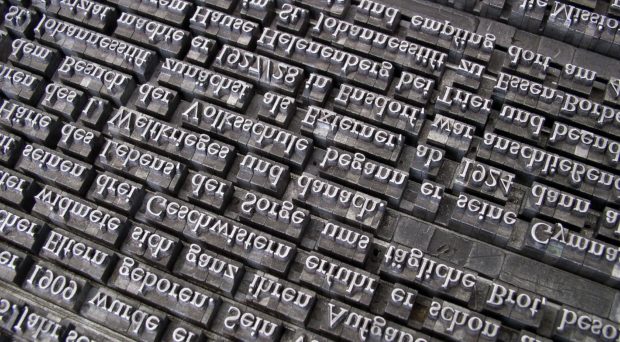News
EPJ Data Science Highlight - The nexus of attention shift in the wake of a disaster
- Details
- Published on 04 December 2017

Nowadays, platforms like Twitter play a big role in the aftermath of disasters, such as natural disasters, mass shootings, or terror attacks, as people try to receive the latest information on what happened through social media channels. A new study published in EPJ Data Science shows how an analysis of social media responses to disasters might help us better understand the dynamic of the public’s attention during these events, what such an analysis shows about people’s attention spans and focus points in the aftermath of disasters, and how analyses like these could be performed in a cost-effective way.
(Guest post by Yu-Ru Lin, originally published on SpringerOpen blog)
EPJ E Highlight - Swarm-based simulation strategy proves significantly shorter
- Details
- Published on 01 December 2017

New method creates time-efficient way of computing models of complex systems reaching equilibrium
When the maths cannot be done by hand, physicists modelling complex systems, like the dynamics of biological molecules in the body, need to use computer simulations. Such complicated systems require a period of time before being measured, as they settle into a balanced state. The question is: how long do computer simulations need to run to be accurate? Speeding up processing time to elucidate highly complex study systems has been a common challenge. And it cannot be done by running parallel computations. That’s because the results from the previous time lapse matters for computing the next time lapse. Now, Shahrazad Malek from the Memorial University of Newfoundland, Canada, and colleagues have developed a practical partial solution to the problem of saving time when using computer simulations that require bringing a complex system into a steady state of equilibrium and measuring its equilibrium properties. These findings are part of a special issue on “Advances in Computational Methods for Soft Matter Systems,” recently published in EPJ E.
EPJ Data Science Highlight - Sentiment analysis methods for understanding large-scale texts: a case for using continuum-scored words and word shift graphs
- Details
- Published on 29 November 2017

Due to the emergence and continuously increasing usage of social media services all over the world, it is now possible to estimate in real-time how entire groups of people are feeling at a given point. However, in order to be able interpret the available data correctly, the right tools and methods need to be used. A new article EPJ Data Science examines a range of such methods and shows their ability but also their limitations.
(Guest post by Andrew Reagan, originally published on SpringerOpen blog
As a grad student trying to understand the emotional content of some unreadably large collection of texts, a typical night in grad school can often go something like this: You’re up late at night planning a new research study, thinking about trying some of this fancy sentiment-based text analysis. You resort to your favorite search engine with the query “sentiment analysis package python.” We have all been there, except maybe with R instead of Python (the latter being my favorite).
EPJ B Highlight - Better mastery of heat flow leads to next-generation thermal cloaks
- Details
- Published on 22 November 2017

Chinese physicists manipulate the transfer of thermal energy as a means of reducing heat waste, using thermal camouflage tactics
Ever heard of the invisibility cloak? It manipulates how light travels along the cloak to conceal an object placed behind it. Similarly, the thermal cloak is designed to hide heated objects from infrared detectors without distorting the temperature outside the cloak. Materials for such cloaks would need to offer zero thermal conductivity to help camouflage the heat. Now, Liujun Xu and colleagues from Fudan University, Shanghai, China, have explored a new mechanism for designing such materials. These findings published in EPJ B could have implications for manipulating the transfer of thermal energy as a way to ultimately reduce heat waste from fossil fuels and help mitigate energy crises.
EPJ B Highlight - ID microstructure of stock useful in financial crisis
- Details
- Published on 22 November 2017

New study of the trading interactions that determine the stock price using AI algorithms reveals unexpected microstructure for stock evolution, useful for financial crash modeling
Every day, thousands of orders for selling or buying stocks are registered and processed within milliseconds. Electronic stock exchanges, such as NASDAQ, use what is referred to as microscopic modelling of the order flow - reflecting the dynamics of order bookings - to facilitate trading. The study of such market microstructures is a relatively new research field focusing on the trading interactions that determine the stock price. Now, a German team from the University of Duisburg-Essen has analysed the statistical regularities and irregularities in the recent order flow of 96 different NASDAQ stocks. Since prices are strongly correlated during financial crises, they evolve in a way that is similar to what happens to nerve signals during epileptic seizures. The findings of the Duisburg-Essen group, published in EPJ B, contribute to modelling price evolution, and could ultimately be used to evaluate the impact of financial crises.
EPJ D Highlight - Droplet explosion by shock waves, relevant to nuclear medicine
- Details
- Published on 22 November 2017

Ion beam cancer therapy could be improved if ion-induced shock waves are discovered. A new study explores how these predicted waves can be observed
An arrow shooting through an apple, makes for a spectacular explosive sight in slow motion. Similarly, energetic ions passing through liquid droplets induce shock waves, which can fragment the droplets. In a study published in EPJ D, Eugene Surdutovich from Oakland University, Rochester, Michigan, USA with his colleagues from the MBN Research Centre, Frankfurt, Germany have proposed a solution to observe the predicted ion-induced shock waves. They believe these can be identified by observing the way incoming ions fragment liquid droplets into multiple smaller droplets. The discovery of such shock waves would change our understanding of the nature of radiation damage with ions to cancerous tumour. This matters for the optimisation of ion-beam cancer therapy, which requires a thorough understanding of the relation between the physical characteristics of the incoming ion beam and its effects on biological tissues.
EPJ B Highlight - Greater government responsiveness is paramount to maintaining stable societies
- Details
- Published on 20 November 2017

Complex systems models reveal that socio-political instabilities are so predictable that the need to reduce the time lag in political decision-making is blatantly obvious
The Brexit is the perfect example of a time-delayed event. It will happen, if at all, only several years after the referendum vote. Dynamical systems with time delays, like societies making political decisions, have attracted considerable attention from physicists specialised in complex systems. In this new study published in EPJ B, Claudius Gros from Goethe University Frankfurt, Germany has shown that over time, the stability of our democracies can only be preserved by finding ways to reduce the time span governments and other political actors typically need to respond to the wishes of citizens, particularly when confronted with external shocks. That’s because citizens’ opinions are now forming much more quickly than ever before, relative to the time lags that policy decision making involves. This means that drastic changes in modes of governance may be required in order to keep democratic societies stable.
EPJ D Colloquium - Two-dimensional laser-induced fluorescence in the gas phase: a spectroscopic tool for studying molecular spectroscopy and dynamics
- Details
- Published on 16 November 2017
Two-dimensional laser-induced fluorescence (2D-LIF) extends the usual laser-induced fluorescence technique by incorporating a second dimension, namely the wavelengths at which the excited molecules emit, thereby significantly enhancing the information that can be extracted. It allows overlapping absorption features, whether they arise from within the same molecule or from different molecules in a mixture, to be associated with their appropriate "parent" state and/or molecule.
EPJ A Highlight - From experiment to evaluation, the case of n+238U
- Details
- Published on 14 November 2017

Evaluated nuclear data represent the bridge between experimental and theoretical achievements and final user applications. The complex evolution from experimental data towards final data libraries forms the cornerstone of any evaluation process. Since more than 90% of the fuel in most nuclear power reactors consists of 238U, the respective neutron induced cross sections are of primary importance towards accurate neutron transport calculations. Despite this significance, the relevant experimental data for the 238U(n,γ) capture reaction have only recently provided for a consistent description of the resonance region. In this work, the 238U(n,γ) average cross sections were evaluated in the energy region 5-150 keV, based on recommendations by the IAEA Neutron Standards projects and experimental data not included in previous evaluations.
EPJ Plus Highlight - Ice shapes the landslide landscape on Mars
- Details
- Published on 10 November 2017

SA new study uses a combination of glacial morphology and remote sensing measurement to explore the role of ice in shaping Martian landslides
How good is your Martian geography? Does Valles Marineris ring a bell? This area is known for having landslides that are among the largest and longest in the entire solar system. They make the perfect object of study due to their steep collapse close to the scarp, extreme thinning, and long front runout. In a new research paper published in EPJ Plus, Fabio De Blasio and colleagues from Milano-Bicocca University, Italy, explain the extent to which ice may have been an important medium of lubrication for landslides on Mars. This can in turn help us understand the geomorphological history of the planet and the environment of deposition.




